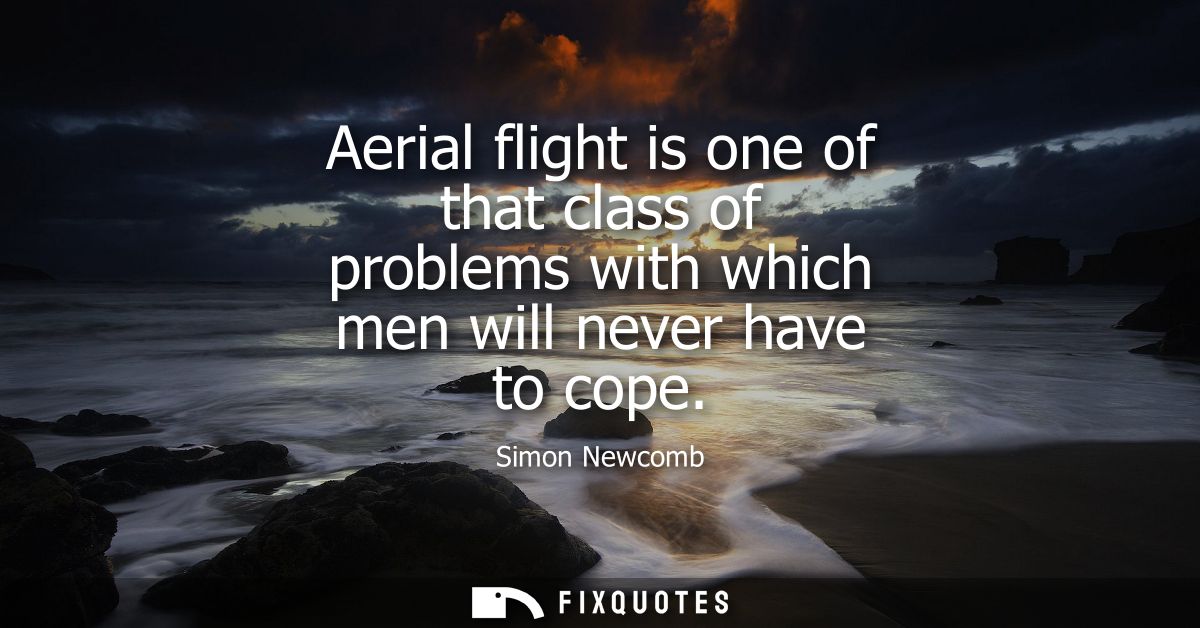"Aerial flight is one of that class of problems with which men will never have to cope"
About this Quote
Simon Newcomb’s assertion that “aerial flight is one of that class of problems with which men will never have to cope” highlights both the scientific skepticism and the prevailing mindset regarding technological possibility at the time he wrote it. The late 19th century, when Newcomb articulated this view, was marked by a mixture of explosive innovation and hard scientific limitations. He was a renowned astronomer and mathematician, highly respected in his fields, which lent considerable weight to his pronouncements about the feasibility of human flight.
Newcomb’s confidence in the impossibility of flight stemmed from empirical and theoretical limitations then understood in physics and engineering. Aeronautical science was still in its infancy; the principles of lift, thrust, and control were only partially grasped, and practical demonstrations were scant or unsuccessful. Early attempts at heavier-than-air flight, such as ornithopters or gliders, had ended in failure or with results that seemed too meager to justify optimism. His statement reflects the intellectual rigor of a scientist constrained by empirical observation: if the current laws suggested impossibility, claims to the contrary stood on shaky ground.
Yet, embedded in Newcomb’s words is a cautionary tale about the underestimation of human ingenuity. Less than a decade after he voiced this skepticism, the Wright brothers achieved powered, controlled, and sustained flight, overturning not only Newcomb’s pronouncement but also the widely held belief that such a feat was unattainable. The human capacity to innovate, to synthesize theory with empirical tinkering, and to imagine new possibilities, allowed for the transcendence of presumed barriers. Newcomb’s remark therefore serves as both a historical artifact of scientific humility and as a lesson in the evolving boundary between impossible and possible, which technology persistently tests and reshapes. It offers a reminder that today’s impossibilities may become tomorrow’s realities, often by the efforts of those willing to question and experiment beyond the consensus of their age.
About the Author

